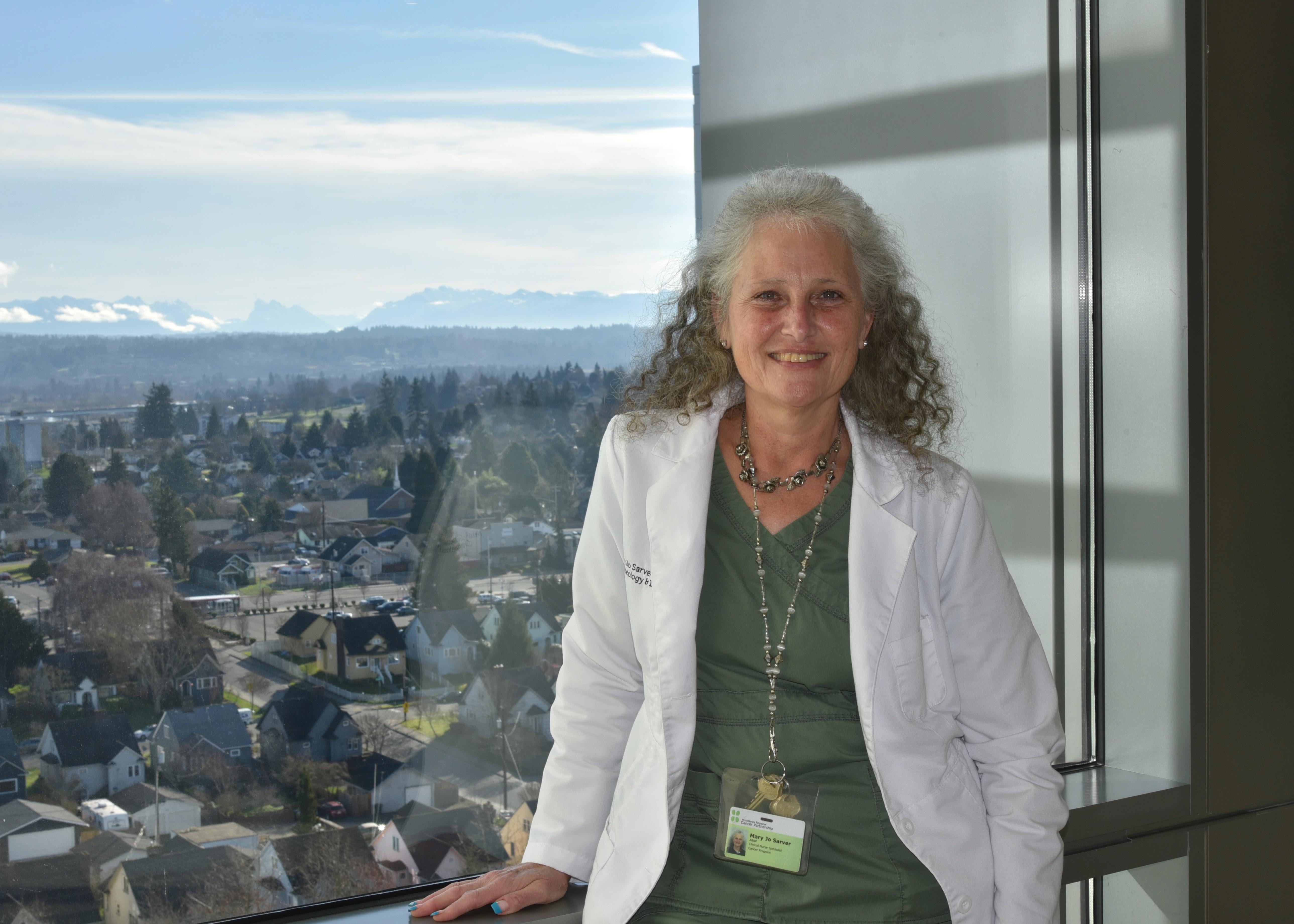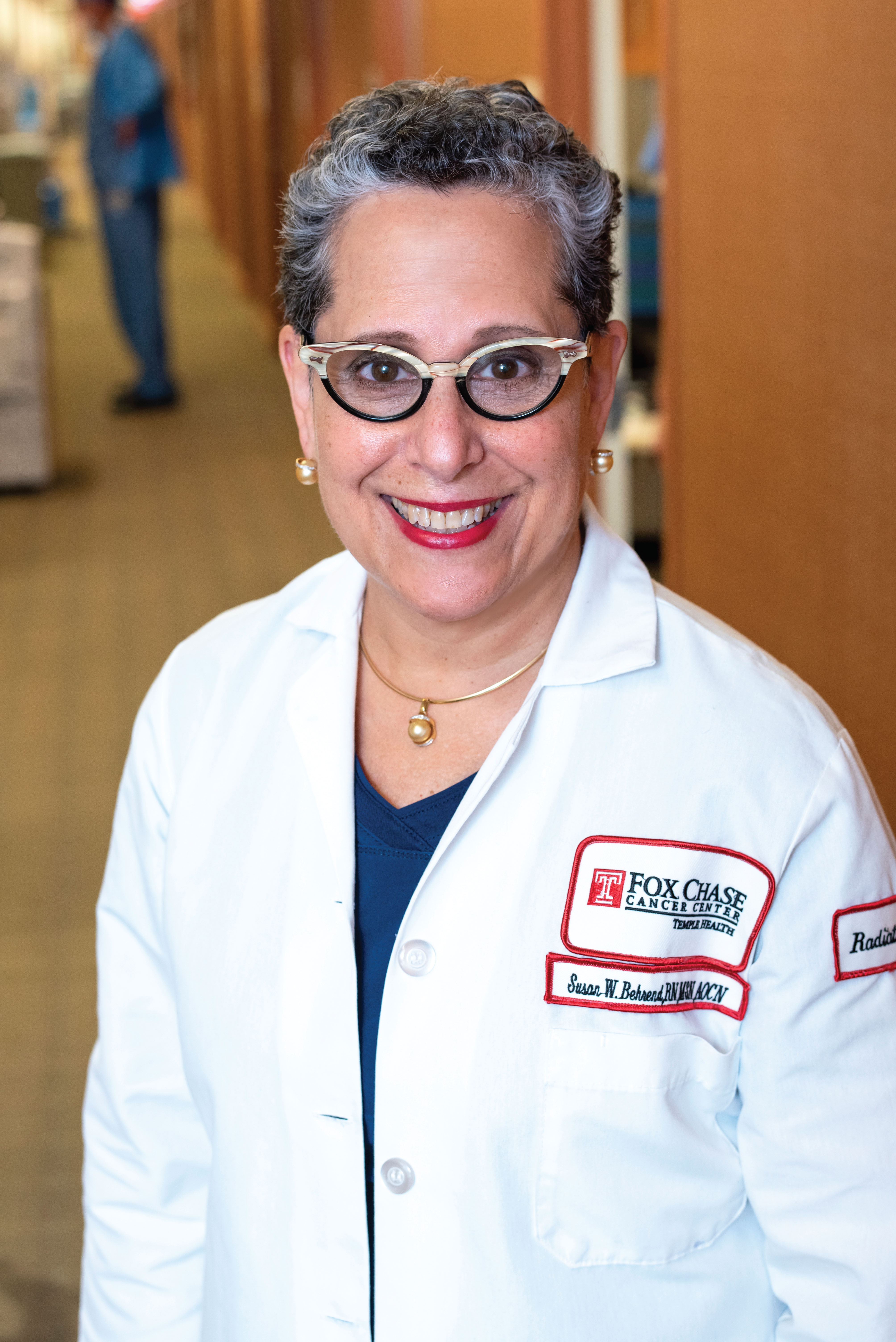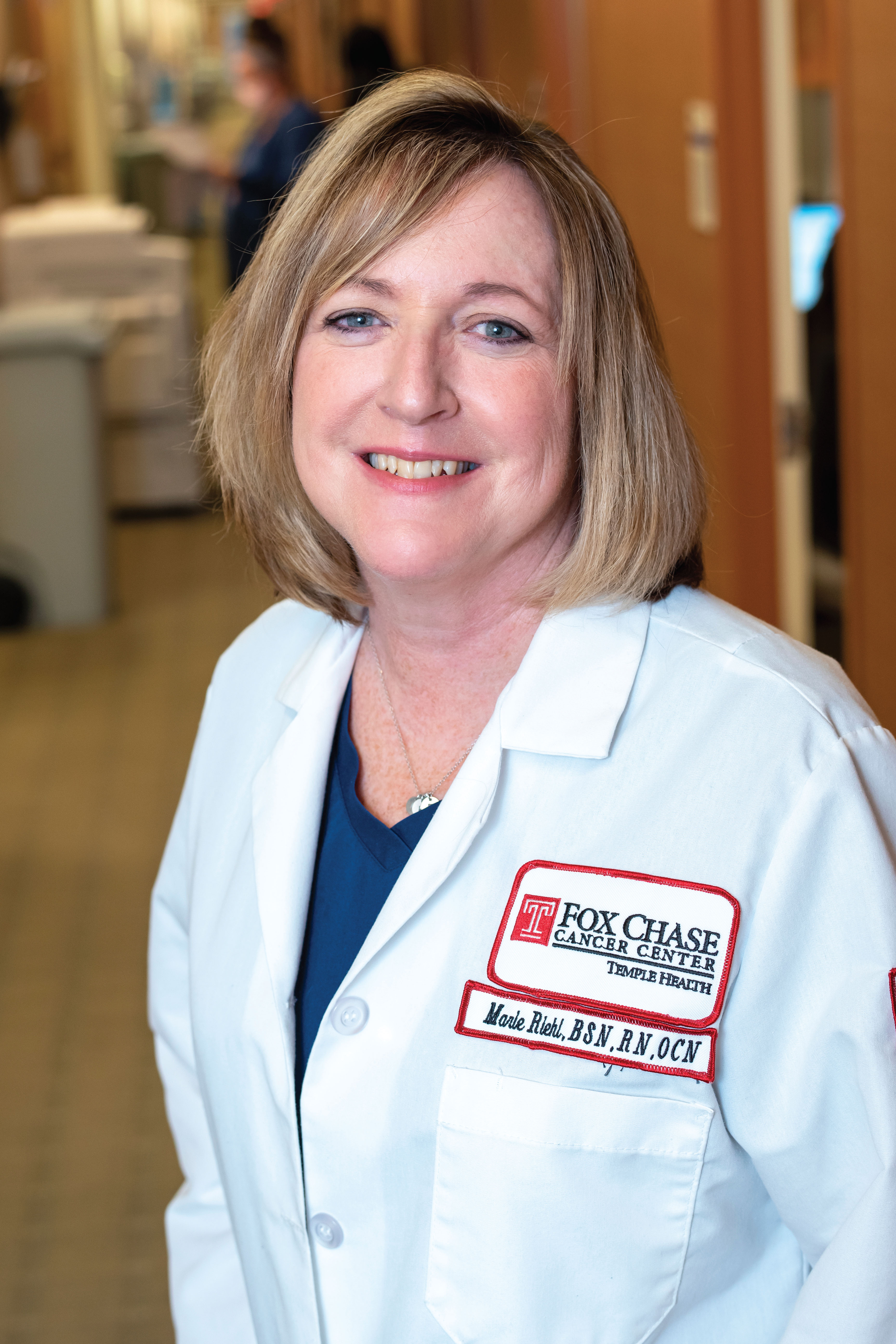The Evolution of Ambulatory Care
Ambulatory oncology began to gradually evolve in the mid-2000s to include multiple aspects of the care continuum. Then suddenly, a pandemic skyrocketed that growth as institutions Raced to develop their ambulatory infrastructure to meet new and changing needs (https://cjon.ons.org/cjon/25/1/ambulatory-oncology-infrastructure-development-response-covid-19-pandemic).
More than two years later, those practice changes are no longer temporary; instead, ambulatory nurses have found that they’ve improved the ever-evolving landscape of outpatient cancer care.
Pandemic Practices Are Now Permanent

ONS member Mary Jo Sarver, MN, ARNP, AOCN®, CRNI, VA-BC, LNC, oncology and infusion services clinical nurse specialist at Providence Regional Cancer Partnership in Washington, has practiced in the acute, ambulatory, long-term, and home oncology care settings. She said “normal days” are a figment of the past. However, her institution implemented several practice changes that became permanent staples:
- Equipment and shortage memo discussions at morning huddles to brainstorm and address workflow deviations
- Resources for virtual patient companionship and support
- Telehealth visits for nonurgent cases and chemotherapy education
- Off-site staff capabilities for preadministration checks and order verification
- Remote staff training program, with a growing library of videos and simulations
Sarver’s institution was developing the companionship resources before the pandemic began but faced challenges such as cost, technology security, perception as a luxury, and concern for misuse. But once the pandemic presented a clear need, the project was prioritized.
Sarver said that the other changes were easier to implement, and her institution updated its staff policies and drew on a nursing council to develop strategies to serve patients and providers.
“I believe our profession will never go back to a pre-pandemic state. Resources and protocols will quickly change as we compile more information and supply and demand fluctuates,” Sarver said. “As we move forward, we must decipher which changes are superior in providing care and which might impede safety and quality. It’s going to take time to evaluate the effect of rapid changes while also assessing sustainability. And I hope that cost savings and debt will not overshadow the need to evaluate both the short- and long-term impact.”
Across the United States at Fox Chase Cancer Center in Philadelphia, PA, ONS members Susan Weiss Behrend, RN, MSN, AOCN®, staff nurse in the department of ambulatory and radiation oncology, and Marie K. Riehl, BSN, RN, OCN®, clinical manager of ambulatory care services, did have an institutional telehealth platform before March 2020. When virtual care became essential, they developed a patient care and outreach workflow with no template.
“It was challenging, but we prevailed,” Riehl said. “But telehealth is here to stay.”

Virtual Patient Screening and Education
Riehl and Behrend agreed that telehealth allows them to promptly respond to the needs of all patients across their center and will help them conduct more comprehensive outreach and patient education in the future.
“Clinical care in the ambulatory oncology setting continues to evolve. As professional oncology nurses, we have adapted with a cohesive team spirt and have honed our laser-focused brilliance to ensure that our commitment to the delivery of evidence-based oncology care is not compromised,” Behrend said. “Teleoncology is a norm of practice, and in so many ways it has kept our patients connected in a safe, effective, and timely manner.
“Of course, in many instances we know that we are unable to offer active cancer treatment regimens via telephone,” Behrend added. “However, our ability to monitor side effects; prescribe supportive medication regimens; review laboratory, diagnostic, and staging studies; manage pain; and assist caregivers with day-to-day issues are indefinite opportunities supported by teleoncology.”
Home Care
Sarver says she is amazed at how much home-based care has evolved throughout her career.

“Back in the day you needed a map, phone booth, and quarters along with a patient sitting by the landline to navigate your way in unfamiliar territory,” Sarver recalled. “Obtaining insurance approval has become timelier and the number of billable services has improved.”
Sarver also said that advancements in infusion devices now allow for safe administration of cancer therapies in the home, which enabled (https://journals.sagepub.com/doi/10.1177/1078155220963527) hospitals to secure beds for patients in need while treating immunocompromised ones comfortably and safely at home (https://journals.sagepub.com/doi/10.1177/1078155220985916). Home-based care is also a more cost-effective and comprehensive (https://link.springer.com/article/10.1007/s13670-021-00372-8) option for many palliative care services.
“Patients who were once placed in an acute or long-term setting for palliative or hospice care can now remain where they are most comfortable and within easy access of loved ones,” Sarver said.
Looking ahead in home-based palliative care nurse innovators, scientists, and leaders have opportunities to create stronger provider training and program structure, increased research, and industrywide standards for processes and outcome measures, all of which are currently lacking (https://link.springer.com/article/10.1007/s13670-021-00372-8). This would enable patients, caregivers, and health systems to objectively assess program efficacy and make informed decisions to address specific patient needs.
Multiple Roles and Care Coordination
Positive ambulatory patient experiences and outcomes require smooth care coordination and oncology nurses are often leading that charge. Behrend said the ambulatory oncology department at Fox Chase Cancer Center is interprofessionally focused and oncology site specific. Each discipline (i.e., medical, surgical, and radiation) has subspecialties that coexist.
“In this way, nurses become experts in a particular specialty,” she said. “We are encouraged to not be static but flexible and willing to assist in other clinical areas as needs arise.”
The ambulatory department, Behrend said, also includes a triage department; hydration clinic; vigorous infusion center that administers systemic chemotherapy, immunotherapy, and blood products; unit that specializes in clinical trial regimens; and direct response unit, which is reserved for individuals requiring a higher level of acuity for emergent needs.
“Ambulatory oncology is more than just a day shift. It is a complex paradigm of clinical, psychosocial, and administrative execution,” Behrend said. “The most intense challenges recently have been the unknowns, the constant practice policy changes, supply hoarding, pushback against immunization acceptance, and strained relationships within the multidisciplinary oncology team.”
Riehl said that a positive is that the collaboration and partnership throughout the organization have grown stronger in supporting quality patient care and safety outcomes. She continues to build on the comprehensive care coordination program to ensure seamless transition amid future practice changes.
Support for Frontline Staff
“I’ve been here for 30-plus years, and I have seen the ongoing challenges in delivering proficient patient care in light of the pandemic over the past two years,” Riehl said. “Although staff are determined as they continue to address the extensive needs of our patients.”
In response, Riehl homed in on professional development and well-being initiatives. She conducted engagement surveys and focus groups with the learning and development and human resources departments. She focused on implementing an education council involving three Masters-prepared nurses to focus on staff education and restructure the orientation program.
“I want my staff to have a voice and to grow and develop professionally,” Riehl said. “That’s what’s going to provide satisfaction as you face your day-to-day work.”
Riehl’s frontline staff members started a journal club bringing the team together monthly. Riehl makes a point to do two or three rounds a day to check on her nurses, listen to how they’re feeling, and ask what they need.
“Throughout the whirlwind of a day, be prepared for the unexpected and take solace in moments of regathering with your colleagues,” Behrend said. “This helps to ensure continuity of care.”
Explore the ONS Nurse Well-Being Learning Library (https://www.ons.org/learning-libraries/well-being-nurses) for resources on supporting yourself and your colleagues.
According to Behrend and Sarver, clear channels of communication have been vital as their practice changes. “Issues at the clinical level can be as time-consuming as sifting through a myriad of emails to navigating daily schedule changes because of both acute and long-term staffing compromises,” Behrend said. “Collegial support has been the most valuable, consistent, and trustworthy resource. Nurse and physician department champions have served as accessible and knowledgeable pillars during times of uncertainty. Virologists, infectious disease specialists, pharmacists, and hospital administrators have also supported us.” See the sidebars for more resources to help you navigate ambulatory practice changes.
“Ambulatory services will continue to be redesigned to accommodate trends in treatments, meet patient needs, and provide cost-effective and sustainable services,” Sarver said. “Remember, change is always inevitable, but hope, faith, love, unwavering dedication, and teamwork have always been the drivers in this profession. The past is behind us and holds many valuable lessons learned along the way. The future is bright, and balance will be restored.”
